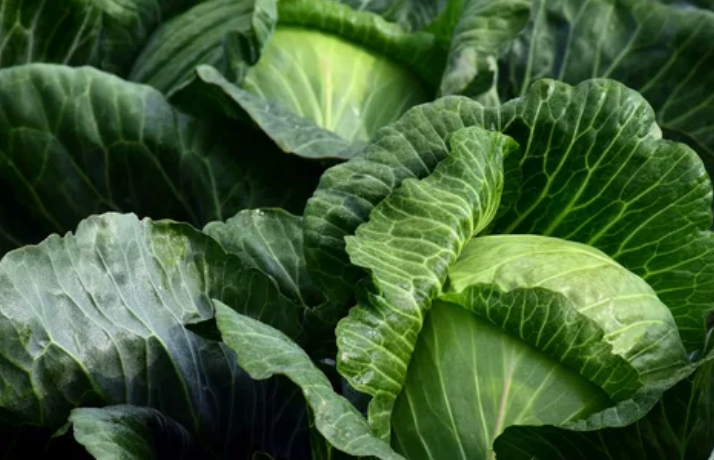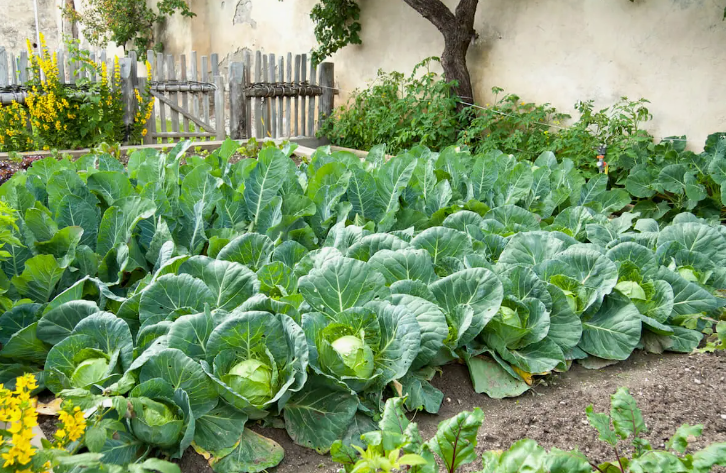The 4 Best Ways to Store Cabbage Long Term

As soon as the fall harvest hits, gardeners often find themselves with too much food for immediate consumption. Therefore, we often look for ways to preserve these vegetables so we’ll have food during winter – cabbage being one such fall vegetable!
The four best methods for storing cabbage over winter include keeping it in a root cellar, garden trench, refrigerator or fermenting them to be consumed later.
I will outline each method to help you select one that is most suited to your fall cabbage harvest, while providing some great storage varieties that you might consider growing.
Why you Should Store Cabbages
If you plan on growing a large crop of cabbage this year, chances are it won’t all get eaten before going bad – thus necessitating storage.
Storing cabbage will ensure that it lasts the whole winter long, while having garden-grown food for yourself to consume in wintertime is one of the cornerstones of self-reliance.
If you live in a region with winter temperatures regularly below 32 degrees, chances are good that no food production takes place over winter unless you have access to some sort of indoor growing space. Unfortunately, most home gardeners don’t have this luxury and rely instead on storage spaces such as root cellars and pantries in order to store harvests until spring returns.
Storing cabbage in a root cellar
A root cellar can be the ideal way to store cabbage during winter as well as many other garden vegetables like potatoes, carrots and beets.
Storage conditions that will maximize cabbages’ long-term viability include cold temperatures and high moisture levels; this ensures they don’t dry out on the inside, unlike many other commonly stored vegetables that prefer dryer conditions.
After harvesting cabbage, you should inspect its heads for signs of decay or injury. They should feel relatively hard with no soft spots or soft areas that might need repair.
If you find a suspect head, immediately cut away and consume all edible portions immediately; or dispose of it if it cannot be salvaged.
Leave all of the outer leaves on your cabbage head. Though it may be tempting to remove some less-than-pretty outer leaves for aesthetic purposes, doing so could actually reduce moisture loss while in storage and help avoid premature drying out of your crops.
Before storing cabbages, it can be tempting to wash them. Although cabbages prefer storage environments with higher moisture levels, too much moisture on their outer heads could encourage disease and rot if left there too long. Once out of storage and ready to consume them again, give your cabbages a good scrub with soapy water before placing back in storage for later. You can give your cabbages one last thorough washing when pulling them out to use again!
Find a suitable shelf in your cellar or basement and use this to lay out the cabbage heads. If possible, spread them out far enough that they won’t touch – this way if any rot does develop on one head, it is less likely to spread and affect others.
If you don’t have much shelf space, an alternative method for growing cabbages would be hanging them from the ceiling with twine. Just make sure not to cut too short of a stem when harvesting; this is where the twine will tie.
Storing cabbage in a garden trench
Properly stored cabbage heads can last for four months in your cellar if stored correctly – long enough to see you through most or all of winter!
Gardeners who lack a root cellar may consider digging a trench to store cabbages over winter.
Storage trenches can be useful tools in helping maintain moisture content within cabbages themselves. They act similarly to refrigerators but also play an integral part in keeping cabbages at optimal moisture content levels.
For optimal storage in your garden, dig a trench 2 feet deep that is wide enough to store cabbages evenly layered.
Once your trench is dug, add a thick layer of straw insulation before placing your cabbages into it and to keep temperatures manageable. As soon as they are planted in their new home, throw more straw until all heads have been covered by vegetation.
Cover your trench with something, like a tarp, to protect it from snowfall. Snow isn’t necessarily bad when it comes to trench storage; in fact, snow may add another layer of insulation and protection for your storage trench.
With this method, it’s crucial not to cut off the roots before placing cabbages in the trench; this helps ensure water does not seep away through their root stalks and cause leaching out.

Refrigerator Storage of Cabbage
Your refrigerator can be an effective long-term storage option for cabbage. However, its dry environment could pose issues for these moisture-loving cabbage plants.
To help manage this process, the best place for cabbage storage is the crisper drawer of your refrigerator because these compartments are designed to maintain humidity within them.
Even in an extra large fridge, your crisper drawer may only hold two cabbages at the most. Once that space has been exhausted, cabbages can also be stored on regular shelves of your fridge in plastic bags to retain their moisture and prevent their heads from drying out prematurely.
Fermenting cabbage for preservation
Many of us are familiar with sauerkraut, a form of fermented cabbage. I personally find sauerkraut delicious but some might find its tart taste distasteful. Once fermented, however, the cabbage takes on an irresistibly sour and tart flavor which pairs nicely with various food dishes.
People use various techniques for making sauerkraut, with many recipes and guides available online to give it a go. Here’s my quick, straightforward version for everyone else to enjoy:
As part of your first step to making sauerkraut, begin by cutting up cabbage into thin slices or pieces and mixing in some coarse salt.
Once the salt has been added, you must pound your cabbage to extract all of its juices. I like using the end of a wooden spoon for this task; for larger batches I have seen people use giant logs as they use an iron mallet to smash buckets full of chopped cabbage!
At this point, fill your glass jar(s) to about 2/3 full with cabbage, packing down tightly so as to eliminate air bubbles and leaving room at the top for your weight.
As you pound away at the cabbage, salty juices will be released during pounding; these liquids, known as brines, should remain submerged beneath it. As a weight source I will place a small plastic bag of water directly overtop of my cabbage in my jar.
My method for making sauerkraut involves leaving my jar out on the counter for at least 3 weeks without covering it, after which time it should have fully fermented and be ready to store in your fridge for up to 6 months.
Best cabbage varieties for storage
Some varieties of cabbage offer greater storage longevity than others, including:
- Ruby Perfection
- Kaitlin Typhoon
- Buscaro.
Takeaway
At this point, your cabbage should be safely stored away for winter. Whether that means keeping it cool in a root cellar, the refrigerator, or creating ferments to enjoy during colder weather months – your cabbage will last you until spring arrives again!
Ciara Konhaus

I’m Ciara and I’m a gardener and agricultural educator in zone 6b. I’ve farmed and gardened all over the Appalachian mountains and love to empower people with the tools they need to start their own gardens.
